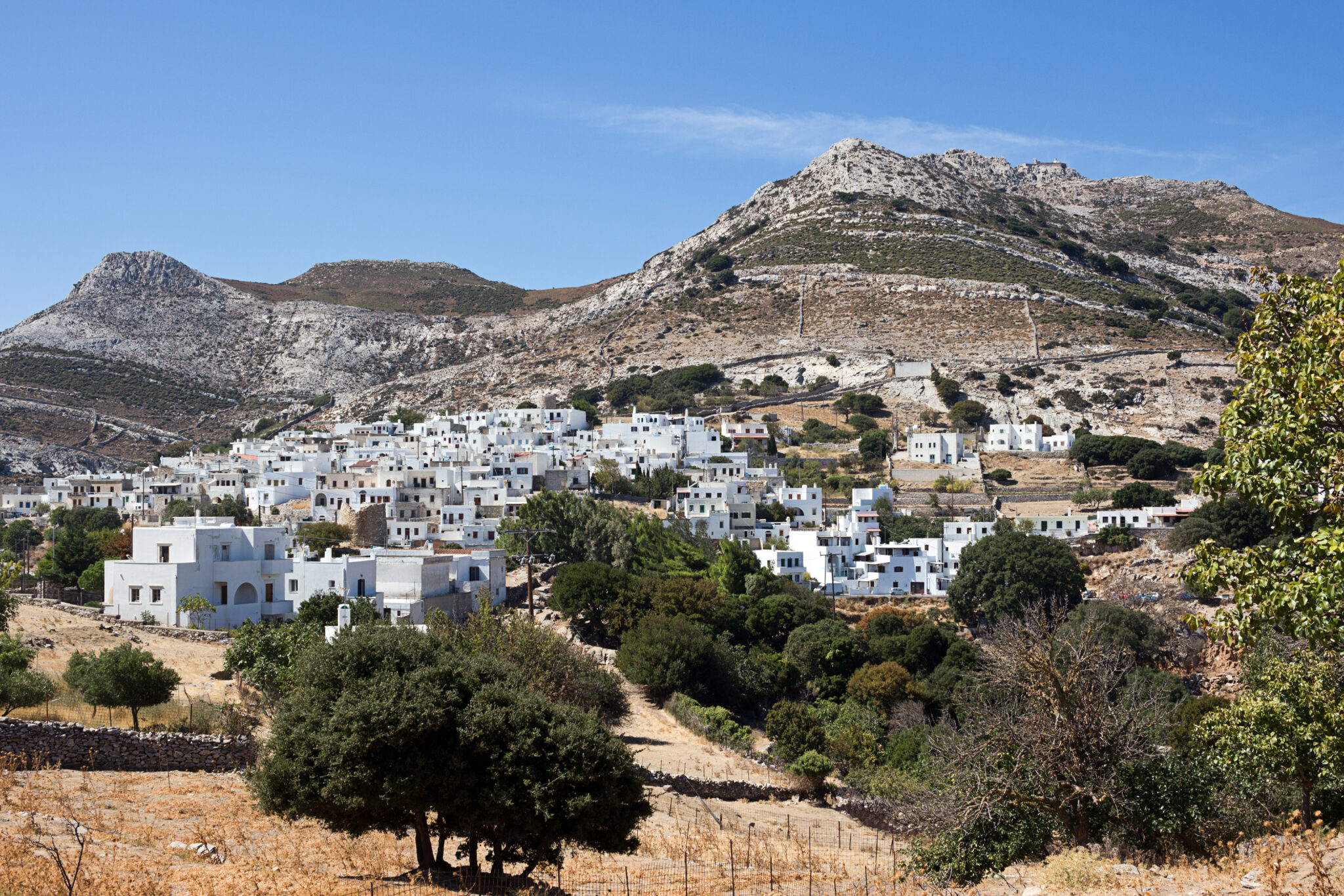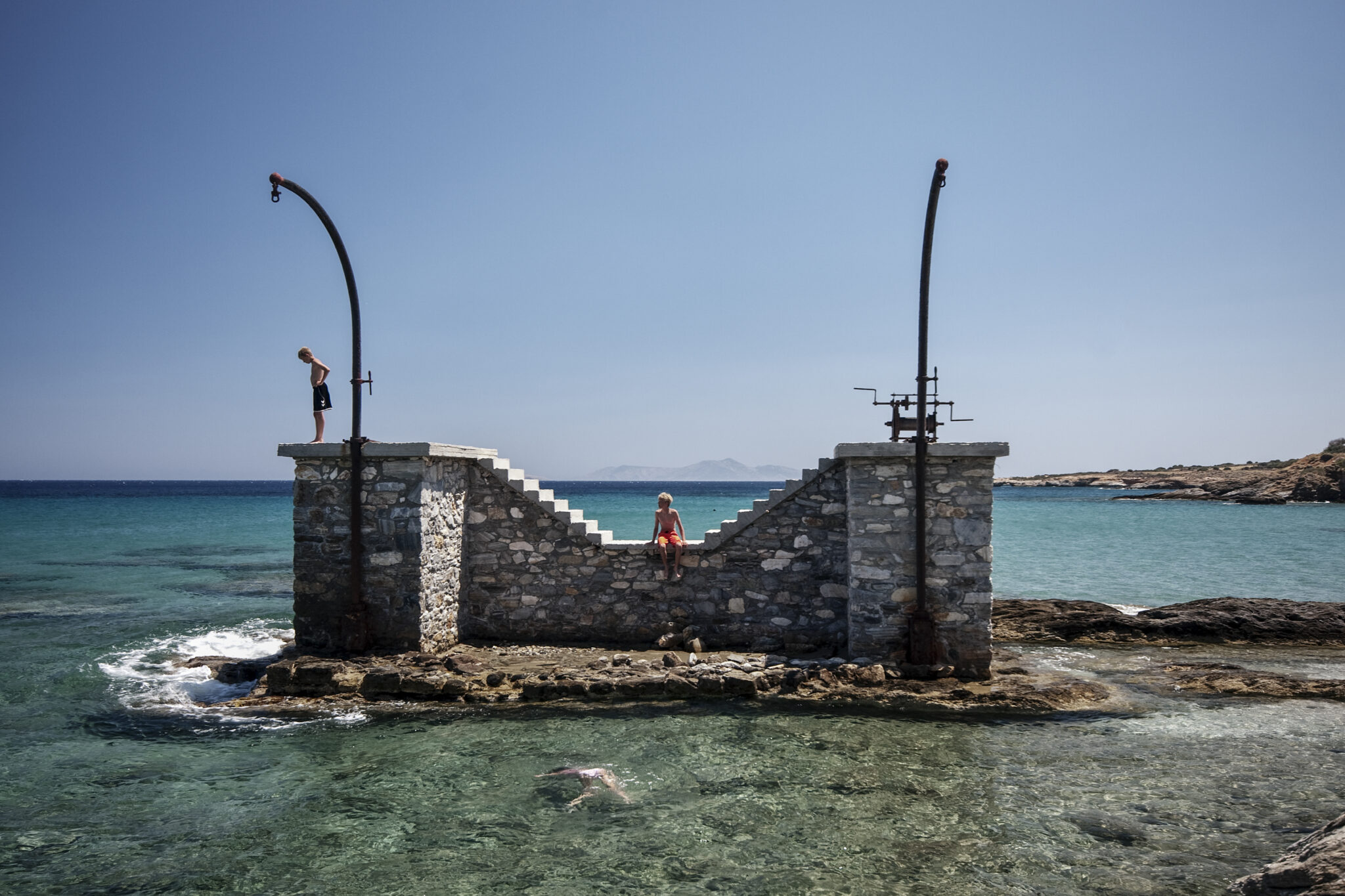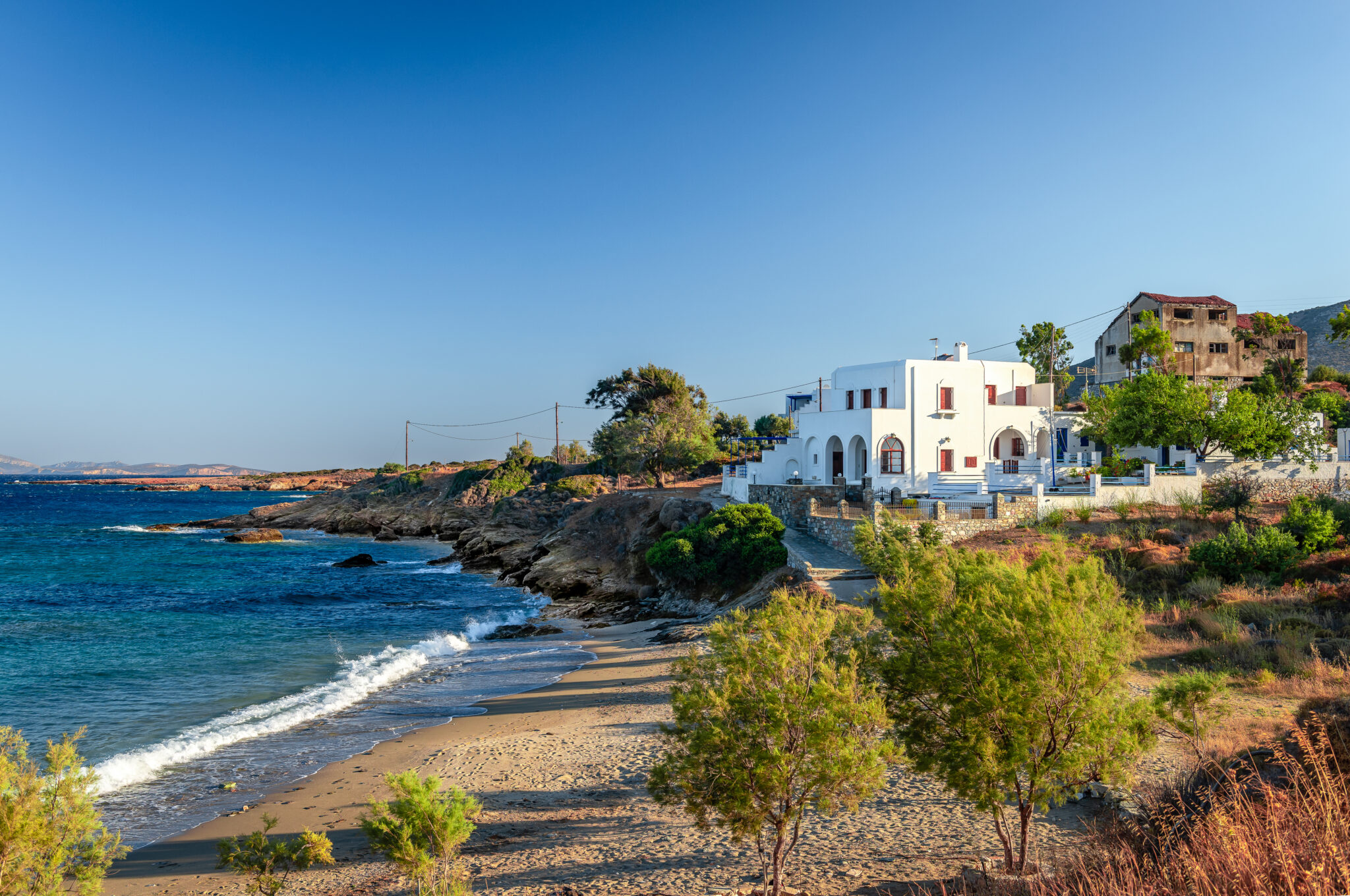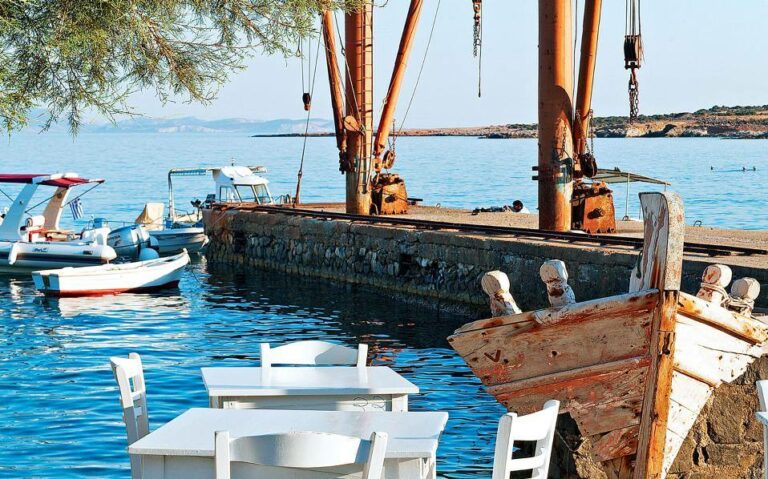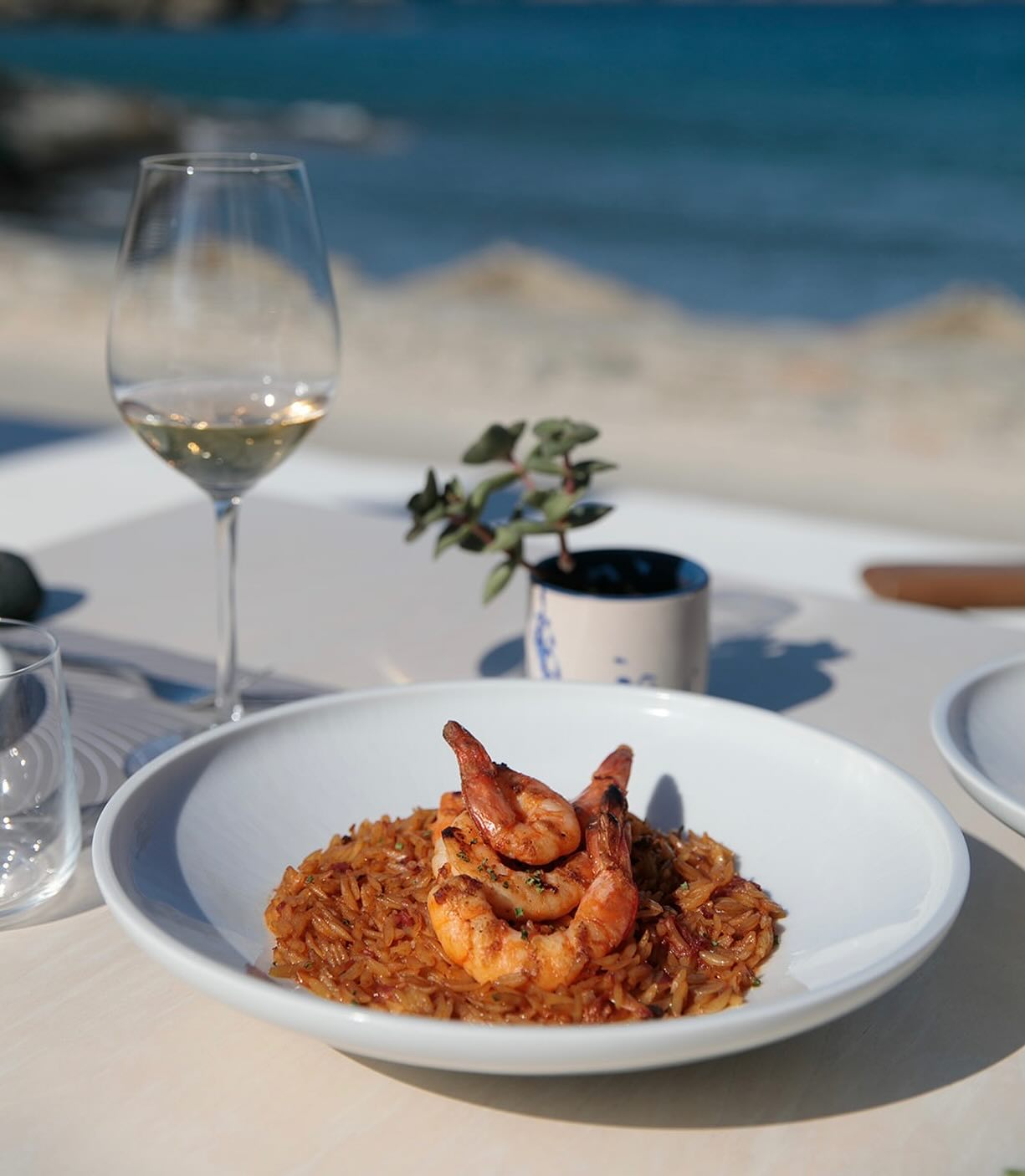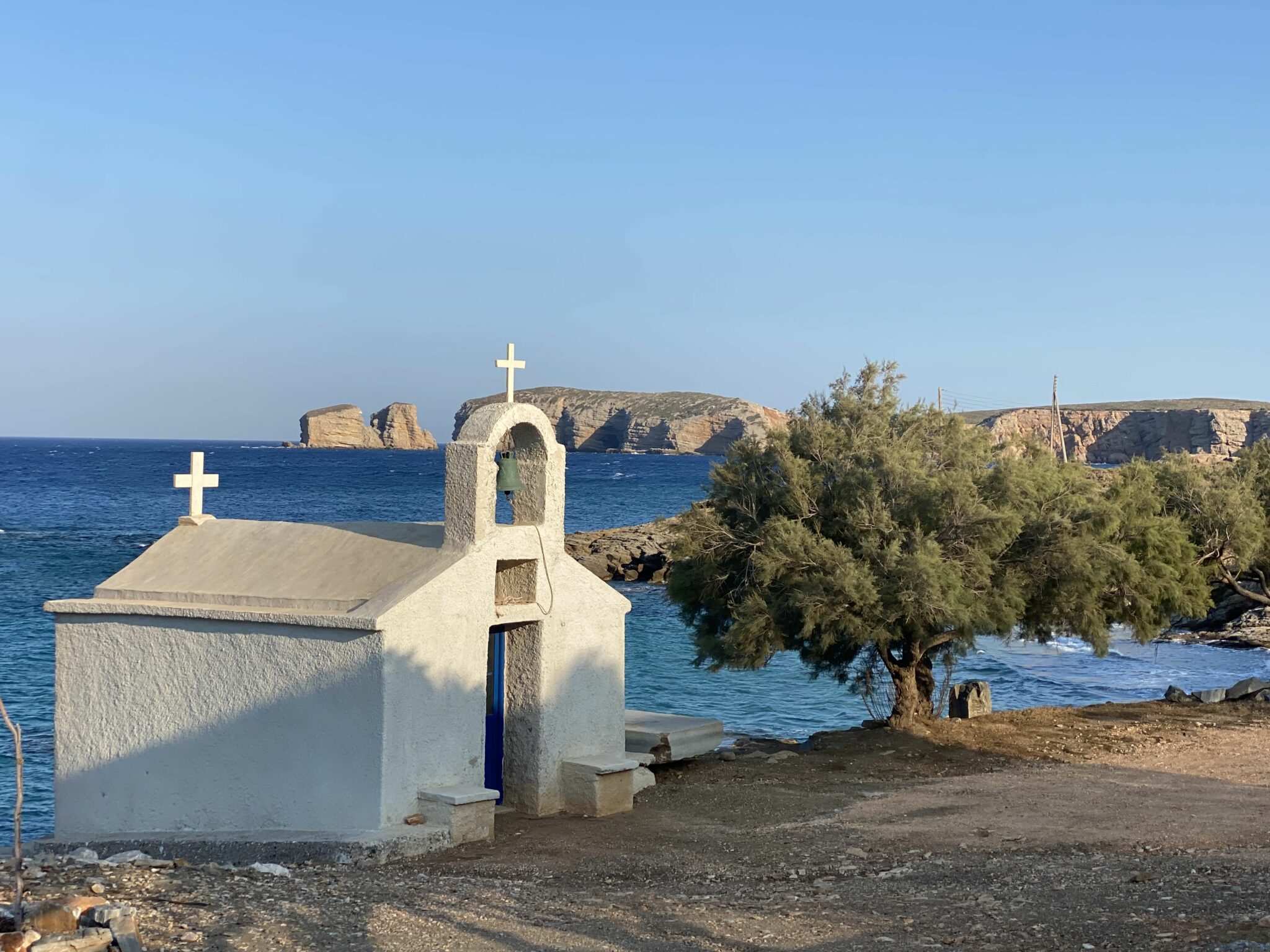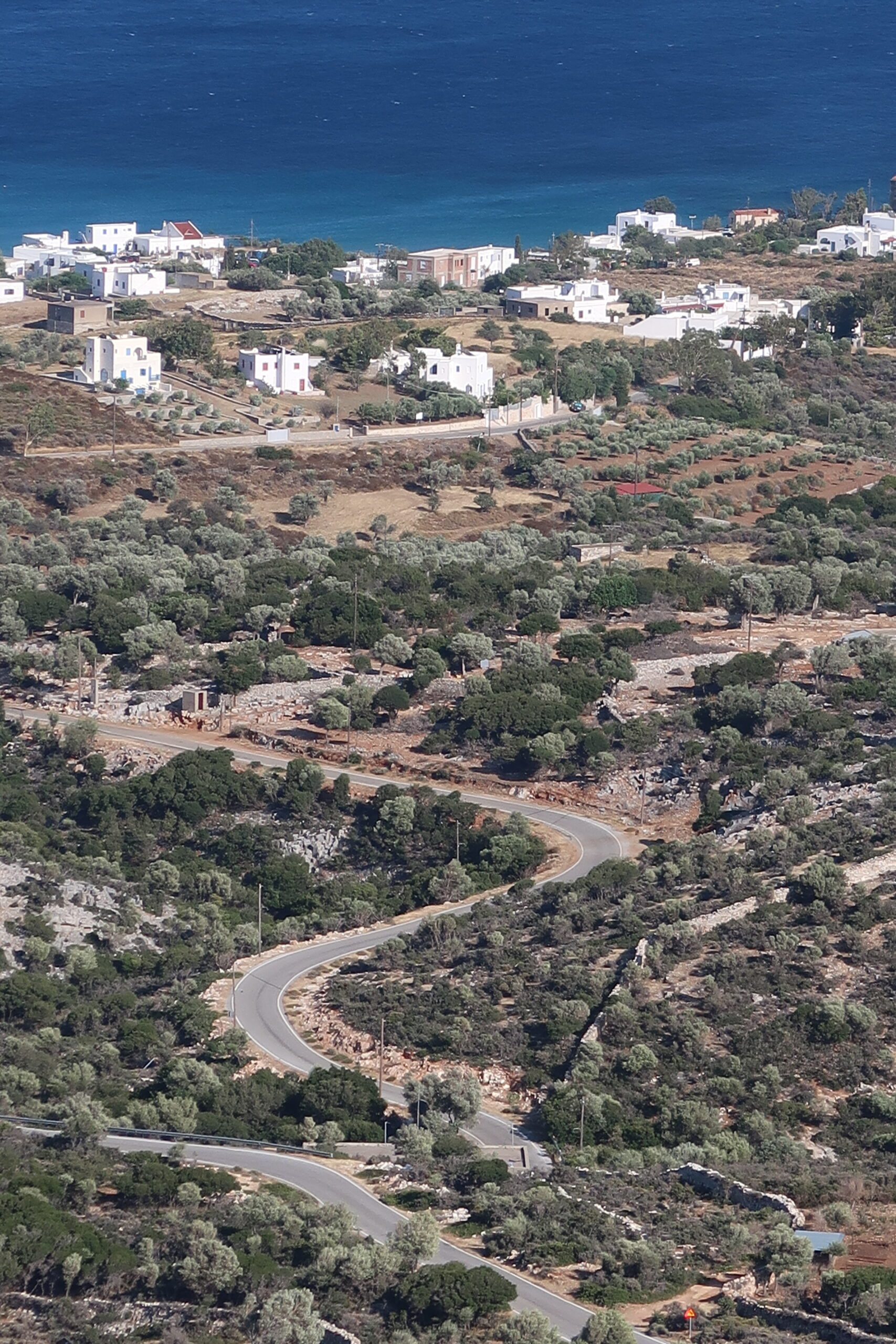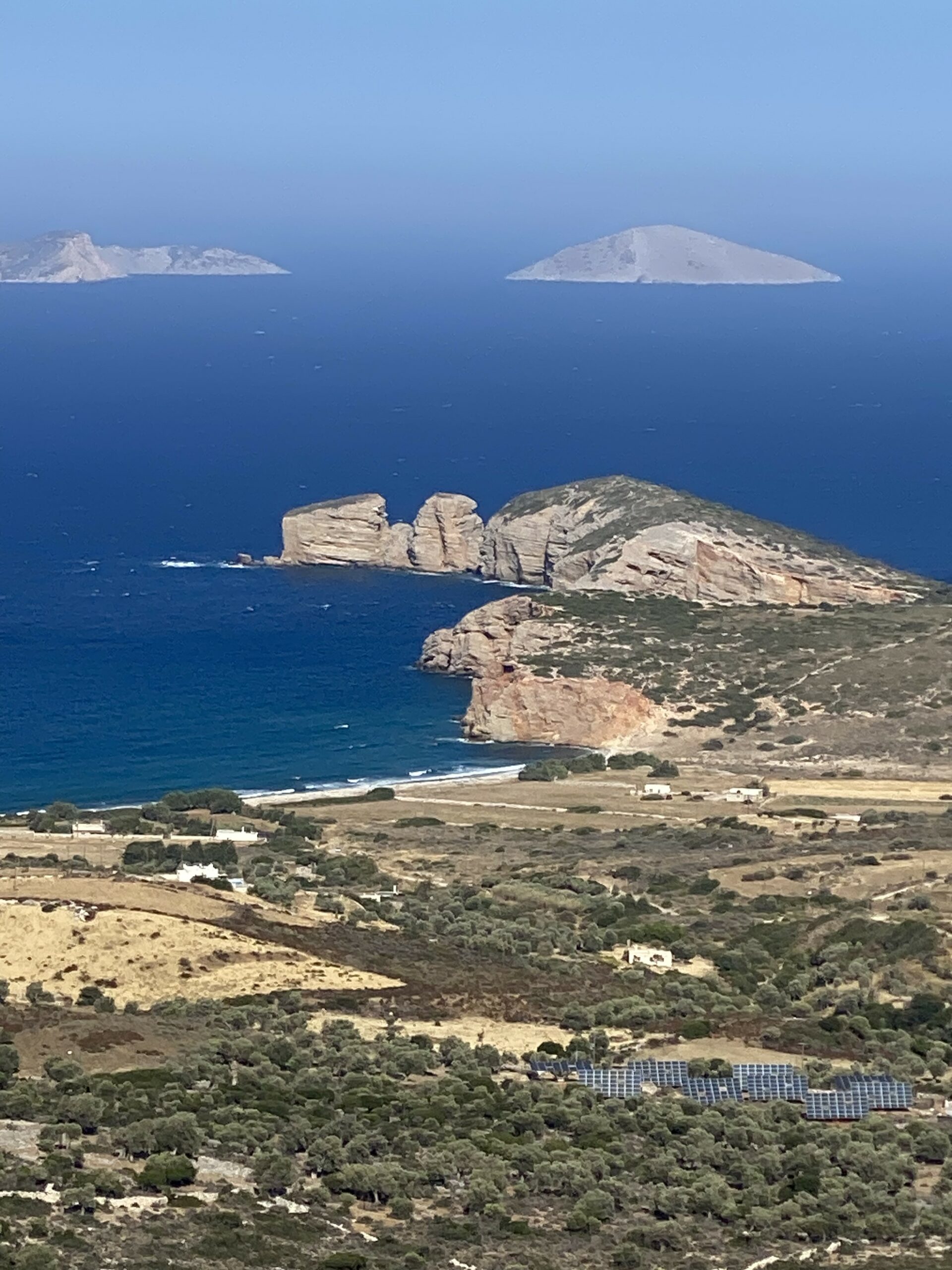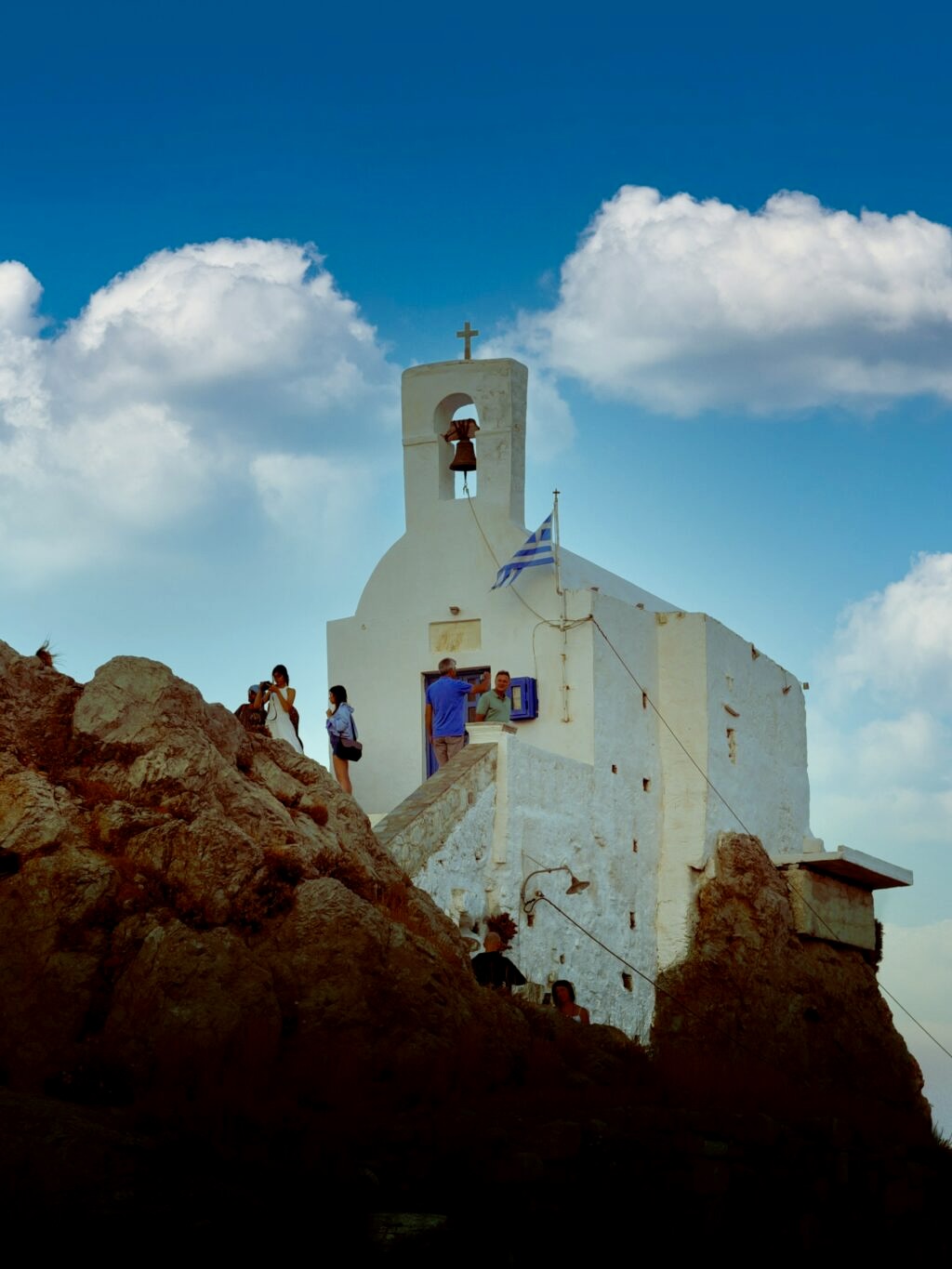The eastern side of Naxos reveals a different face of the island—one of serene villages, authentic landscapes, and untouched corners that resist the pressures of mass tourism.
For many, this is the “other Naxos,” an insider’s path into a place that evolves slowly and carefully, safeguarding its quiet beauty while making subtle improvements for the people who call it home.
Turning at Apeiranthos
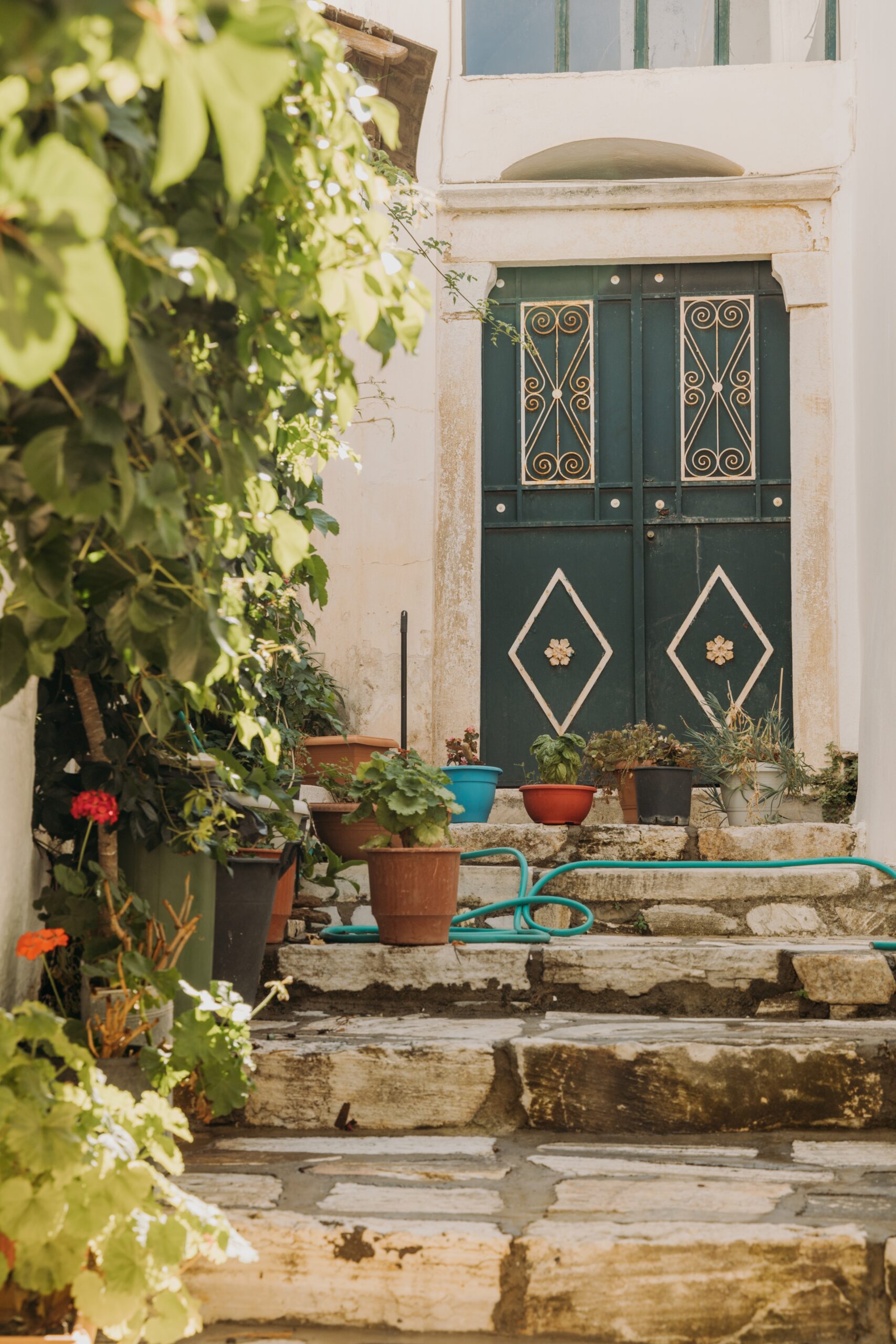
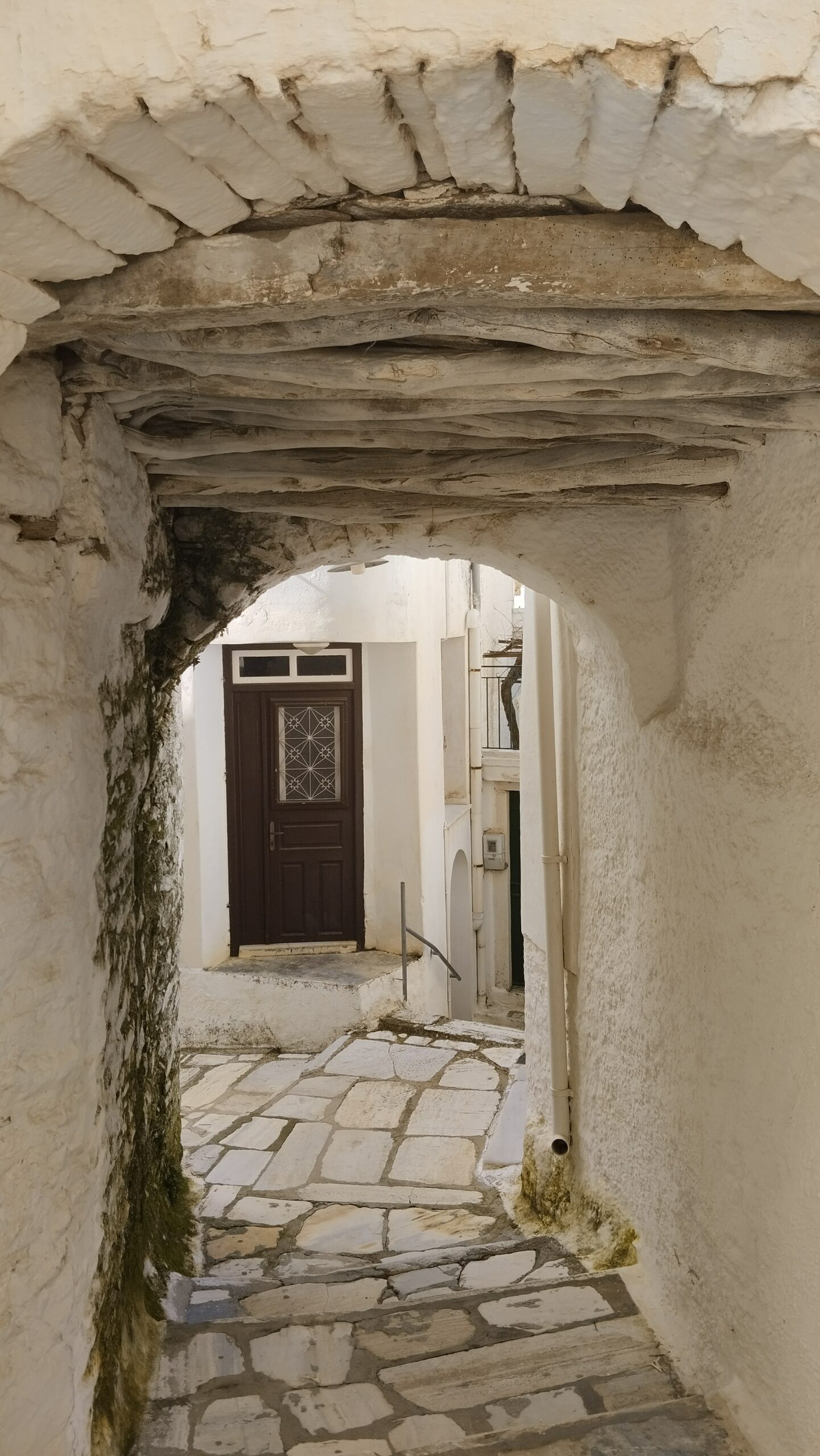
It was nearly a decade ago when I first drove across Eastern Naxos. I still remember the surprise as we reached Apeiranthos, turned right, and began descending toward the sea. The road clings to the slope, while on the right the grandeur of Naxos’ “stone culture” unfolds—ancient dry-stone walls tracing pastures for miles, terraces built over centuries to save even the smallest patch of cultivable land.
“That’s how they managed to pen their animals while carving out small flat plots, the so-called chalia, for mixed gardens,” Antonis, a local who divides his life between Apeiranthos and Moutsouna, later explained. Apeiranthos’ historic port, Moutsouna, remains one of the Cyclades’ most atmospheric little harbors, layered with history yet intact in beauty.
A Balcony Over the Aegean
Further along, the road delivers one of the most striking viewpoints in the Aegean. The sculpted cliffs of the Moutsouna peninsula dominate the foreground, framed by the tiny islets of the Makares and the silhouette of Donousa. To the right, Koufonisia, proud Keros, and the gentle outline of Amorgos complete the horizon. It feels like standing on a balcony overlooking an intimate neighborhood of islands, all so close yet each enveloped in its own rich mythology.
Nearby, the small Byzantine chapel of Agios Mamas—one of the oldest on the island—and the roadside shrine of Agia Kyriaki make fitting pauses. The wind may lash the cliffs, but the spot invites both contemplation and photographs.
Soon after, another chapter of local history appears: the remains of the aerial cableway that once carried emery ore from the mountains down to Moutsouna’s port. For decades, this network shaped the economy and social life of five villages in northeastern Naxos, forming entire communities of miners, overseers, and engineers around the trade.
At Moutsouna’s Harbor
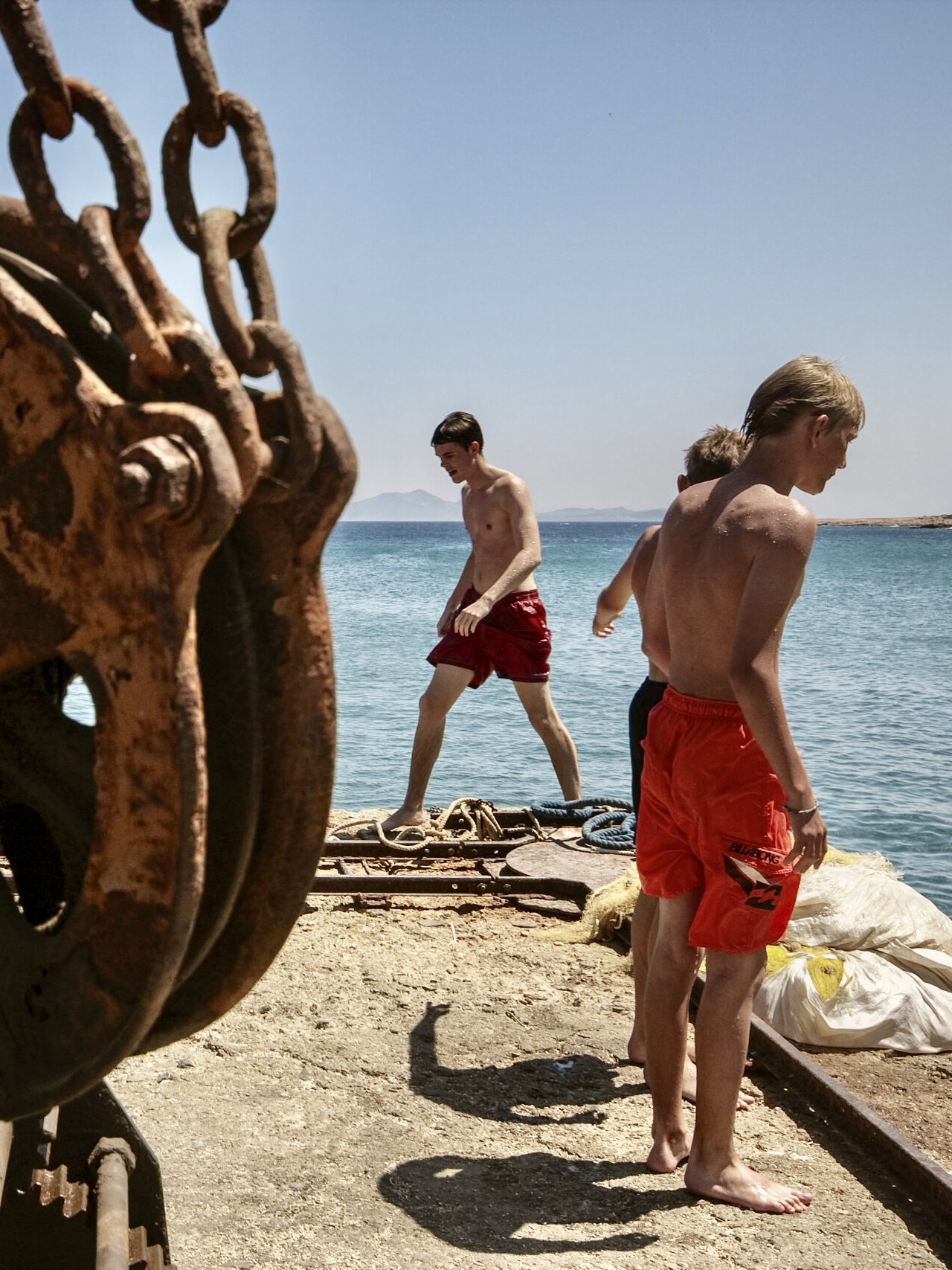
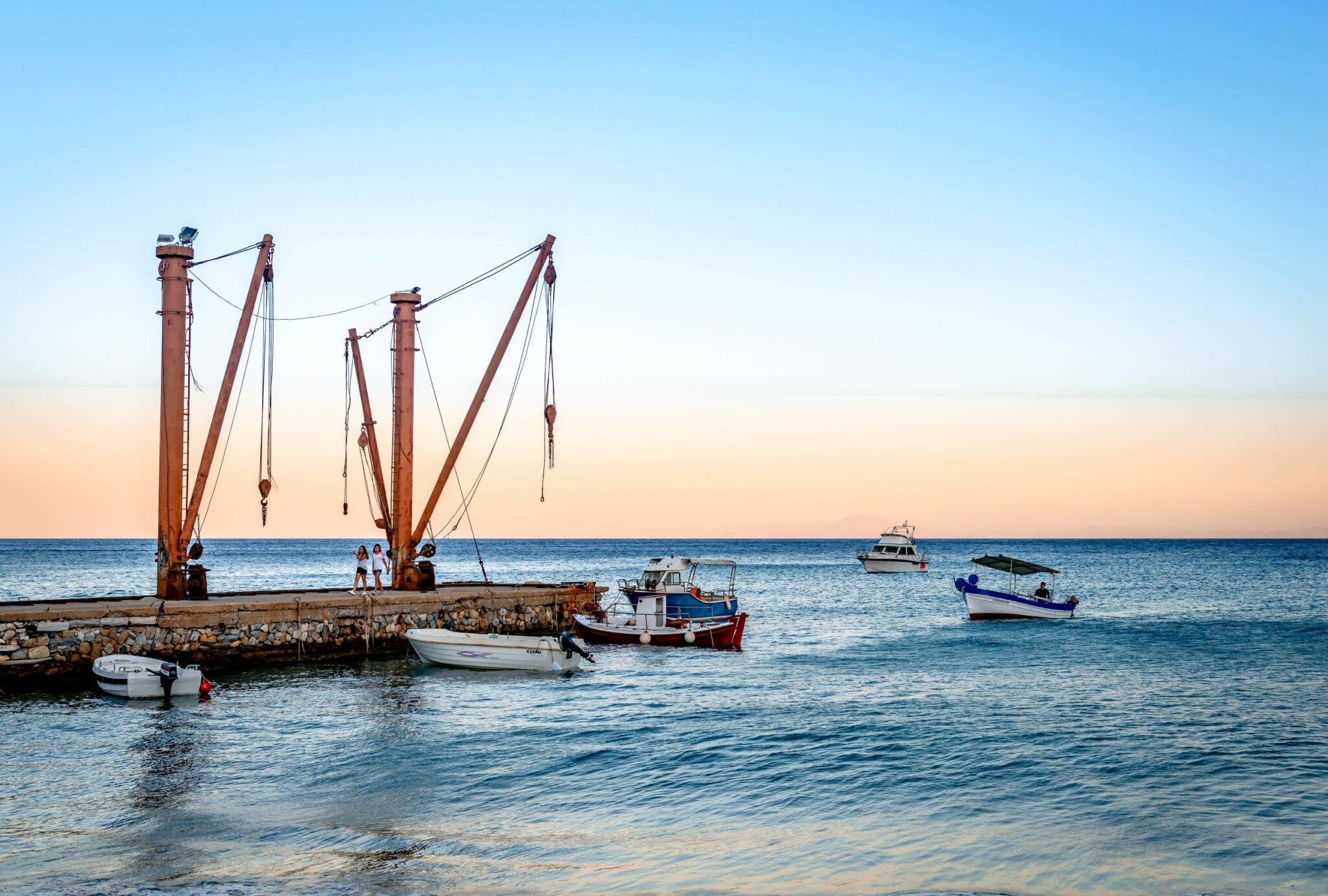
Arriving in Moutsouna, leave the car at the parking area and stroll down to the waterfront. The cranes and hoists that once lifted blocks of emery onto waiting ships now stand rusted against the brilliance of the Aegean, reminders of another era.
Fresh Fish and Tradition
Along the quay, three tavernas keep the harbor alive with the scent of grilled fish and the hum of conversation. At Apanemi, the owners bring in their own catch, serving it with the kind of simplicity that lets the sea speak for itself. A few steps away, To Dichti has been part of village life since the 1960s, a breezy spot for crisp salads, fresh pasta, and homemade desserts eaten almost at the water’s edge.
And then there is Alos, named after the halo around sun and moon, where traditional Naxian flavors are given a modern lift and evenings linger over cocktails as the horizon dissolves into starlight. Together, they turn the old working harbor into a place where history, sea, and table come together seamlessly. On my last visit, we sat down to a crisp tuna salad and a steaming seafood pasta prepared by Evdokia, paired with fish caught that morning by Matthaios and his boat, Agios Nikolaos. A sandy beach laps at the edge of the harbor, prized for its clear water and easy access, while a mini-market and a bakery serving handmade pies and strong coffee round out the village’s offerings.
The Exotic Shores of Azalas
Just beyond Moutsouna lies Azalas, a beach of polished pebbles and a raw, untamed charm. At its left end, a patch of sand makes swimming easier—especially on calm days when the sea is still.
Continuing along the coast, the small hamlet of Ai-Dimitris offers a chapel perched at the water’s edge and hidden coves with quiet stretches of sand, perfect for a quick dip. You’ll find it by turning left at the dirt road marked at Moutsouna’s entrance.
From here, the journey into Eastern Naxos unfolds further, weaving through villages and shores that remain among the island’s best-kept secrets.




